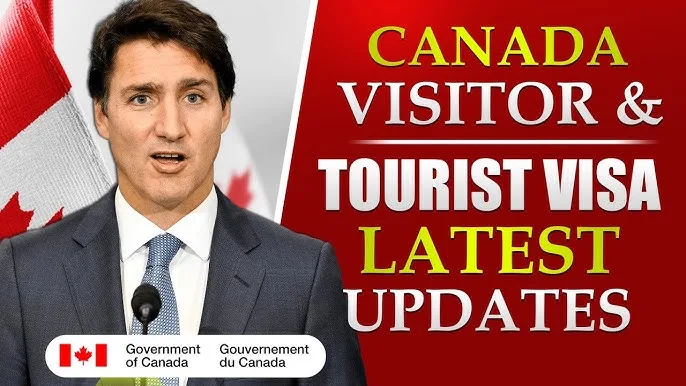Canada, known for its welcoming stance on immigration, is set to admit over 1 million newcomers in 2025. However, for the first time, the government is introducing measures to control the flow of new arrivals, prioritizing long-term sustainability.
If you’re planning to move to Canada as a worker, student, or permanent resident, it’s crucial to understand the latest updates to the country’s immigration policy.
The new Immigration Levels Plan outlines reduced intake targets for the next three years, which will impact your application strategy. Here’s what you need to know;
Canada’s 2025 immigration targets are ambitious, aiming to welcome approximately 1.07 million newcomers, including both temporary and permanent residents. This number breaks down into 673,650 temporary residents and 395,000 permanent residents.
The temporary resident category includes international students, temporary foreign workers, and others. The government has set targets for temporary residents to reduce their share of the population to 5% by the end of 2026.
On the other hand, the permanent resident category includes economic immigrants, family reunification, refugees, and others. The economic immigrant category is expected to account for approximately 62% of total permanent resident admissions by 2027.
Here’s a more detailed breakdown of the 2025 targets:
– Temporary Residents: 673,650
– International students: 305,900
– Temporary foreign workers: 367,750
– Permanent Residents: 395,000
– Economic immigrants: 232,150
– Family reunification: 94,500
– Refugees and protected persons: 58,350
– Humanitarian and compassionate cases: 10,000
These targets are part of Canada’s 2025-2027 Immigration Levels Plan, which aims to promote economic growth, reunite families, and provide a safe haven for refugees .

What’s Behind this Decision
Canada is shifting its immigration strategy to prioritize sustainability and smart growth. Here are the key reasons:
Managing Rapid Population Growth
Canada’s population has been growing too quickly, putting pressure on:
– Housing: shortages and affordability crises in major cities
– Healthcare: strain on medical resources and services
– Infrastructure: demands on transportation, education, and community facilities
Balancing Economic Growth with Resource Planning
To ensure long-term sustainability, Canada aims to:
– Balance economic growth with careful resource planning
– Reduce the temporary resident population to 5% of the total Canadian population by 2026
By adopting this smarter approach, Canada can:
– Address pressing issues like housing affordability and healthcare accessibility
– Foster a more sustainable and equitable society for all Canadians
This strategic shift will help Canada maintain its reputation as a welcoming and inclusive country while ensuring a brighter future for its citizens.
If you’re planning to immigrate to Canada soon, here’s what you need to know:
1. Tougher Competition for Permanent Residency
With 21% fewer PR spots available in 2025, you’ll need to:
– Strengthen your application
– Align your skills with Canada’s economic needs
– Act faster to increase your chances
2. Temporary Residency Can Be Your Golden Ticket
In 2025, over 40% of PR admissions will be temporary residents already living in Canada, such as:
– International students
– Workers
– Caregivers
Being in Canada can significantly boost your PR chances!
3. In-Demand Jobs Take Center Stage
60% of PR spots will go to skilled workers in high-demand sectors, including:
– Healthcare
– Tech & Engineering
– Construction
– Transportation & Logistics
– Agriculture & Food Services
4. Francophone Applicants Get a Boost
Canada aims to welcome 8.5% more French-speaking PRs to support minority Francophone communities outside Quebec.
Stay ahead of the curve and adjust your immigration strategy accordingly.
Big Changes Ahead for Aspiring Temporary Residents
If you’re planning to apply for a study permit or work permit in Canada, here’s what you need to know:
International Students:
– New Target: 305,900 students in 2025 (reduced from previous years)
– Stricter Approval Criteria: Canada will prioritize students with secure housing arrangements
– Provincial Caps: Some provinces may introduce limits or require attestation letters for designated institutions
Temporary Foreign Workers:
– New Target: 367,750 workers in 2025 (reduced from previous years)
– Prioritized Occupations: Critical skill gap occupations will take priority under the International Mobility Program (IMP) and Temporary Foreign Worker Program (TFWP)
Plan Ahead;Processing Times May Vary:
Canada aims to process 80% of applications within standard timelines, but:
– Reduced quotas mean more competition: Longer wait times are expected in some categories
– Incomplete or complex applications will face delays: Ensure you submit a complete and accurate application
– Canada is going digital: AI-assisted processing and digitized applications will help speed up processing times
Looking Ahead to 2026:
Canada’s long-term strategy includes:
– Reducing temporary resident population to 5%: Aligning with the country’s total population
– Fostering regional, economic, and linguistic diversity: Encouraging growth in various regions and industries
– Improving infrastructure planning: Ensuring sustainable growth alongside immigration policy
Planning to Move to Canada in 2026 or Beyond?
Start preparing now, especially if you’re applying as a temporary resident:
– Apply early and carefully: Avoid delays and ensure a smooth process
– Stay informed about immigration policies: Adjust your plans accordingly to increase your chances of success











No responses yet